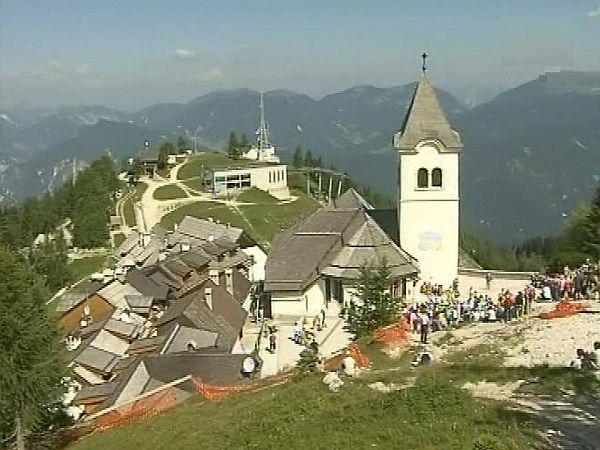
What may at first glance appear to be just another mountaintop in the Italian part of the Julian Alps, not far from the border with Slovenia, happens to be one of the most important pilgrimage destinations for the Slovenian people - and an important gathering place for people from far and wide.
The story of Mt. Lussari - known as Svete Višarje in Slovenian - began in the 14th century. According to legend, one day a shepherd lost his sheep. After a long search, he found them in a bush next to a statue of the Virgin Mary. He took the mysterious statue to the village priest in the valley. Overnight however, the statue vanished from the priest's house - and reappeared back on the mountain. On the urging of the local priest, the influential Patriarch of Aquileia approved the building of a church on the spot where the shepherd found the figure of the Virgin.
Mt. Lussari soon became a key pilgrimage destination for the Slovenian people. Residents from the entire Upper Sava Valley and places beyond spent many hours journeying o the top of the mountain. The pilgrimage was arduous in those times, but it became a tradition. Pilgrims were even asked to bring up logs of wood for heating.
The history of Mt. Lussari was not without incident. In 1907, lightning damaged a large part of the church, but World War I left a bigger mark. In 1915, a grenade almost destroyed the church, but amazingly, the statue of the Virgin Mary survived unscathed. After the war, the church was rebuilt and was decorated with frescoes by Tone Kralj, a Slovenian master of religious murals.
Today, Mt. Lussari hosts annual meetings of Slovenians from around the world, serving as a gathering place for the Slovenian diaspora. It also has another, more local role: It’s where people from Slovenia, Austria, or Italy come together. The link represents the shared destiny of three peoples living on the southeastern edge of the Alps.
Jaka Bartolj

































































